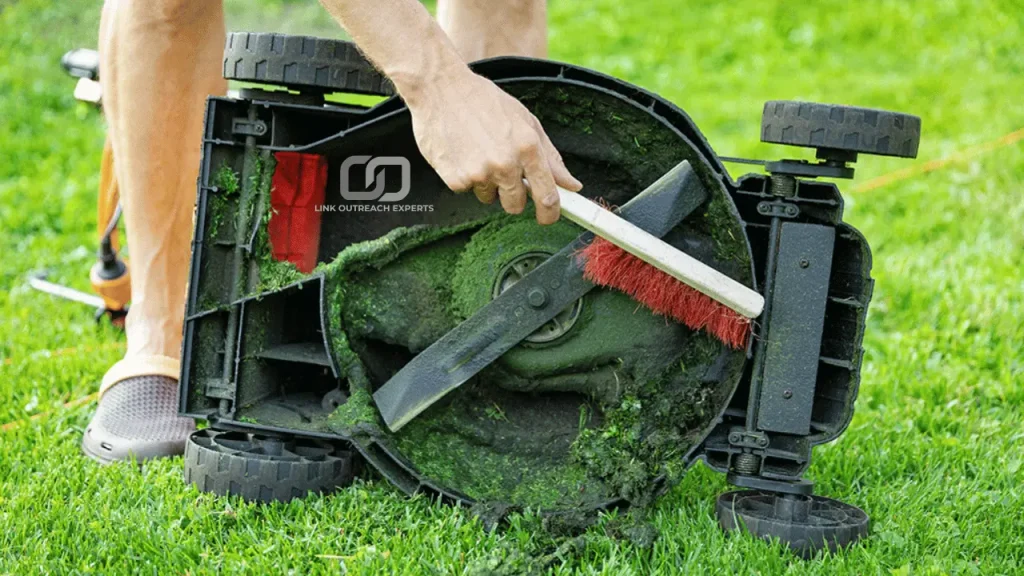Creeping Charlie is a fast-growing weed that spreads across lawns. It has round, scalloped leaves and small purple flowers. This weed grows low to the ground and forms thick mats. It is difficult to remove because it spreads through stems and roots. It thrives in shady, moist areas and can quickly take over weak lawns. If not controlled, it can choke out grass and other plants.
Creeping Charlie spreads through creeping stems called stolons. These stems grow along the ground and produce new roots. If you break a piece, it can still regrow. It also spreads through seeds, making it harder to control. Lawn mowers and garden tools can carry pieces to new areas. This weed grows aggressively, especially in damp conditions.
Table of Contents
Identifying Creeping Charlie
Creeping Charlie is a low-growing weed that spreads across lawns. It has round, scalloped leaves that are bright green and shiny. The leaves grow in pairs along the stem, creating a thick ground cover. In spring, it produces small purple flowers that attract bees. When crushed, the leaves release a strong mint-like smell.
The stems of Creeping Charlie are square-shaped, which makes it different from many other weeds. These stems grow along the ground and produce new roots at each node. This allows the plant to spread quickly. Even if a small piece of the stem is left behind, it can grow into a new plant.
This weed thrives in shady, moist areas but can also survive in sunny spots. It often takes over weak lawns where grass is struggling. Unlike some weeds, it stays green even in cold weather. Its rapid growth makes it difficult to control once it spreads. After removing Creeping Charlie, you might want to explore how to tell if your lawn needs lime to prevent further weed infestations.
Why Creeping Charlie is a Problem
Creeping Charlie is a tough weed that spreads fast. It grows thick and forms dense mats, choking out grass and other plants. Since it spreads through creeping stems and seeds, it is difficult to remove completely. If not controlled, it can quickly take over large areas of a lawn.
This weed is especially a problem in weak or shady lawns. It thrives in moist soil and can survive in poor conditions where grass struggles. Even regular mowing does not stop its growth because it spreads sideways along the ground.
Creeping Charlie also competes with grass for sunlight, water, and nutrients. It weakens healthy lawns and creates bare patches when removed. If left unchecked, it can reduce the overall health and appearance of a lawn. Proper lawn care and targeted removal methods are needed to control its spread.
Natural Methods to Remove Creeping Charlie
Hand-Pulling the Weed
Hand-pulling is one of the best ways to remove Creeping Charlie. It works best when the soil is moist, as the roots come out more easily. Pull slowly and carefully to remove all stems and roots. If any part is left behind, the weed can regrow. Regularly checking the lawn and pulling new growth helps prevent its spread.
Using Vinegar Solution
Vinegar is a natural weed killer that can weaken Creeping Charlie. A mixture of household vinegar and water can be sprayed directly onto the leaves. The best time to apply it is on a sunny day when the sun can enhance its effects. However, vinegar can also damage grass, so it should be applied only to the weed. Repeated applications may be needed for full removal.
Smothering with Mulch
Smothering is a slow but effective method. Covering the weed with thick mulch or cardboard blocks sunlight and stops it from growing. Over time, Creeping Charlie weakens and dies. This method works best in garden beds or areas where grass is not needed. Regular monitoring is important to ensure the weed does not spread beyond the covered area.
Chemical Methods to Kill Creeping Charlie
Using Selective Herbicides
Selective herbicides are the best chemical option for killing Creeping Charlie without harming grass. Look for herbicides containing dicamba, triclopyr, or 2,4-D, as these target broadleaf weeds. Apply the herbicide according to the instructions, ensuring even coverage over the affected areas. A second application may be needed for complete removal.
Best Time to Apply Herbicides
The ideal time to apply herbicides is in the fall. During this season, Creeping Charlie absorbs nutrients into its roots, making the treatment more effective. Spring applications can also work but may require repeated treatments. Avoid applying herbicides before rain, as this can wash away the chemicals.
Applying Herbicides Safely
Herbicides can be harmful to people, pets, and beneficial plants. Always wear gloves and protective clothing when applying. Keep pets and children away from treated areas until the herbicide has dried. Follow all safety instructions on the product label to prevent accidental damage to your lawn.
Preventing Creeping Charlie from Returning
A strong, healthy lawn can prevent Creeping Charlie from growing. Thick grass blocks sunlight, making it harder for the weed to spread. Fertilizing the lawn regularly provides nutrients that help grass grow stronger. Aerating the soil improves drainage and root health, reducing the chances of weed growth.
Mowing at the right height helps grass compete with weeds. Keep the grass at least 3 inches tall to shade out Creeping Charlie. Avoid cutting too short, as this weakens the lawn. Watering deeply but less frequently encourages deep root growth, making the grass more resistant to weeds.
Pre-emergent herbicides stop Creeping Charlie before it starts growing. These chemicals prevent weed seeds from sprouting. Apply them in early spring or fall for the best results. Choosing the right product and following instructions carefully can help keep your lawn weed-free.
Conclusion
Killing Creeping Charlie takes time and effort. Natural methods like hand-pulling, vinegar, and smothering can help. Chemical herbicides work faster but need careful application. The best results come from treating the weed at the right time and following proper lawn care practices.
Preventing Creeping Charlie is just as important as removing it. A strong, healthy lawn makes it harder for weeds to grow. Regular mowing, deep watering, and fertilizing keep the grass thick. Pre-emergent herbicides can stop new weeds before they sprout. With the right steps, you can keep your lawn free from Creeping Charlie and other invasive weeds.


